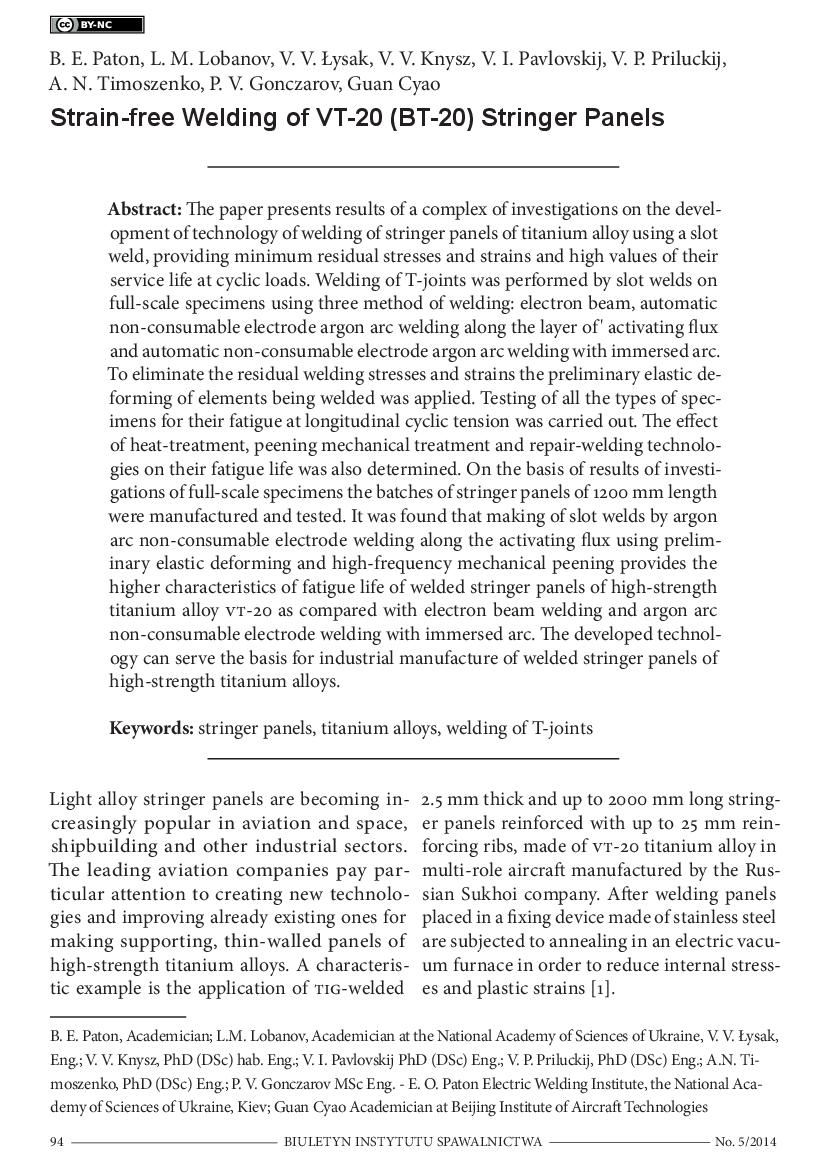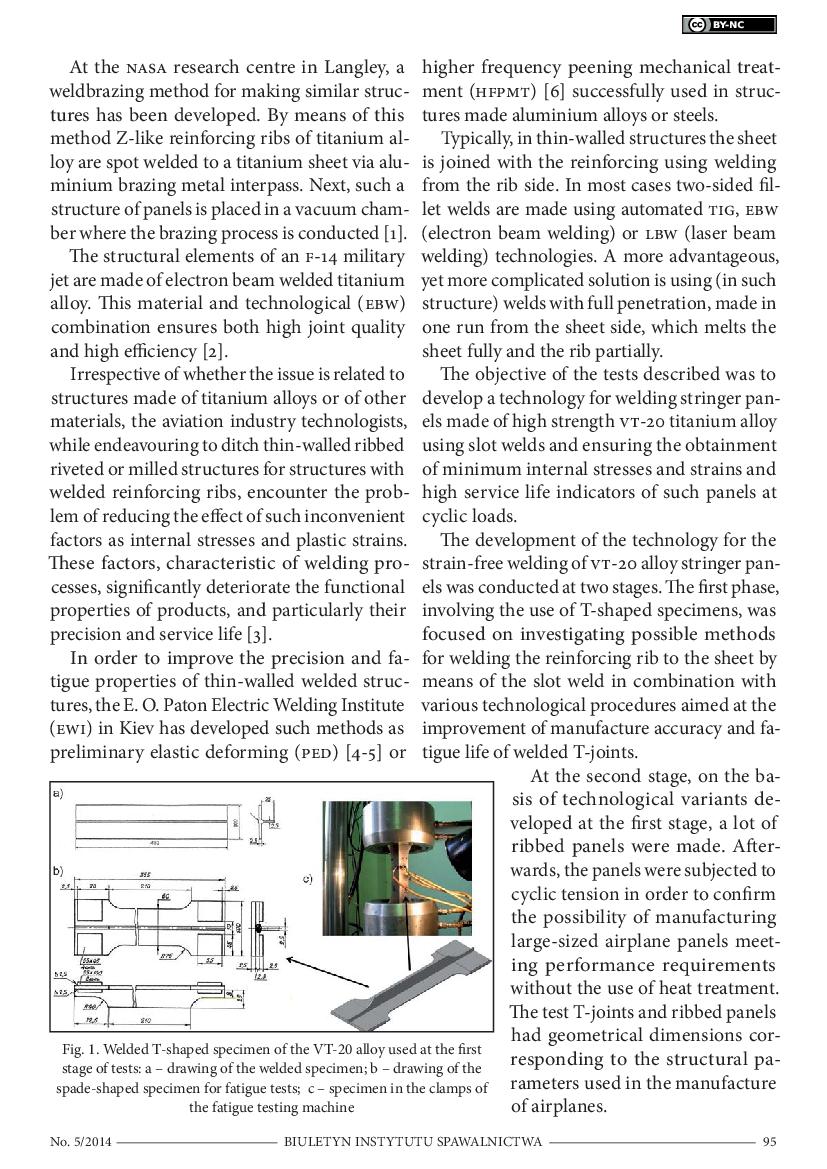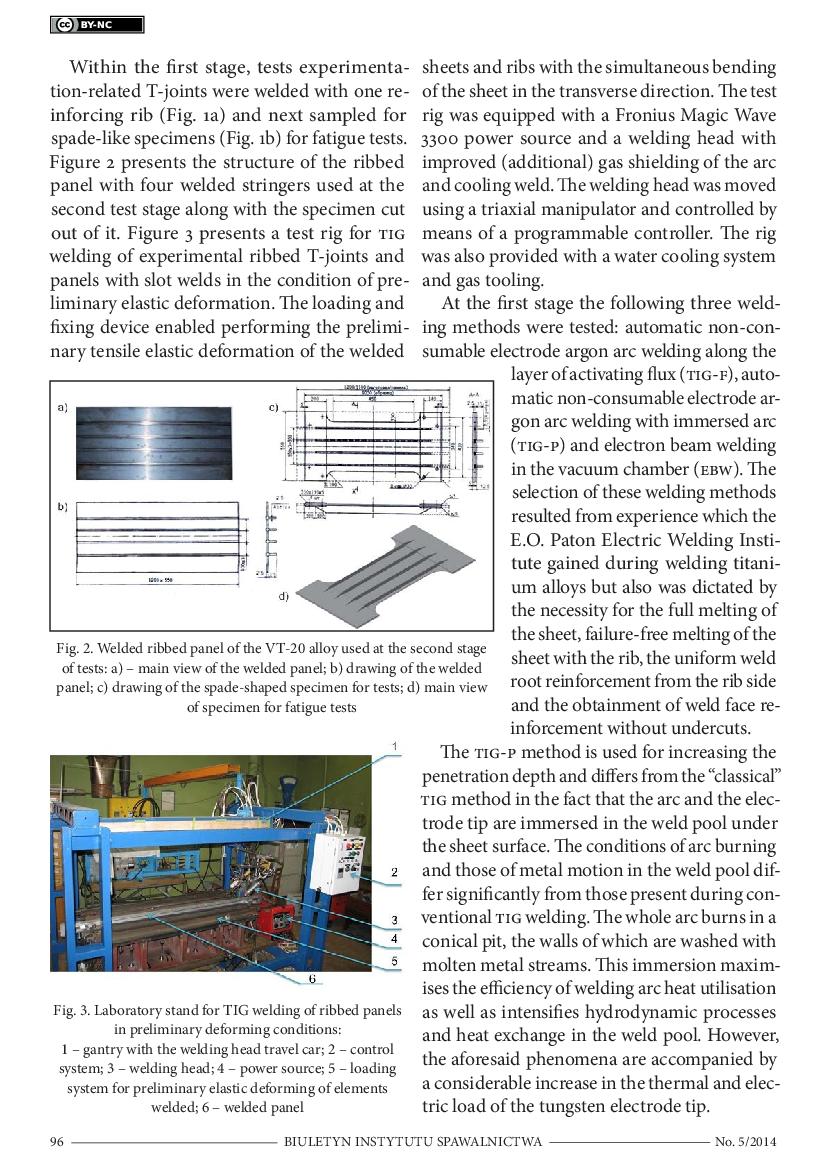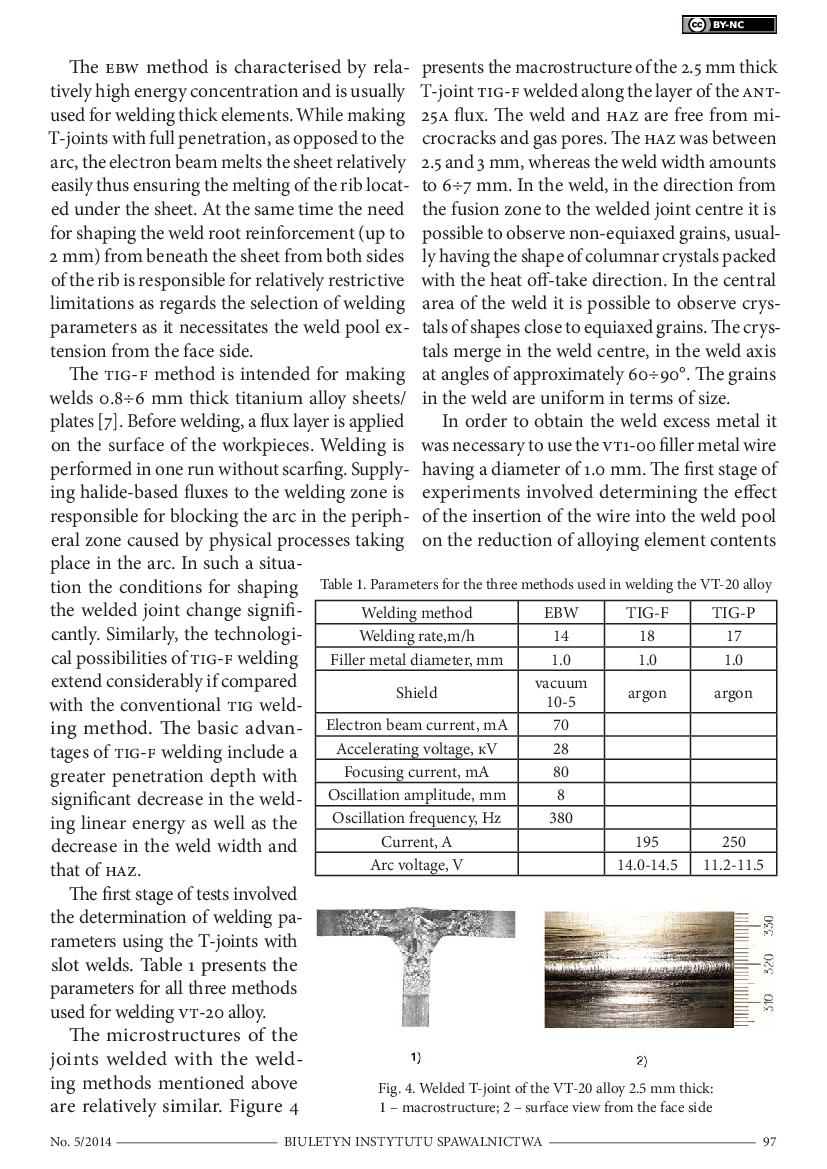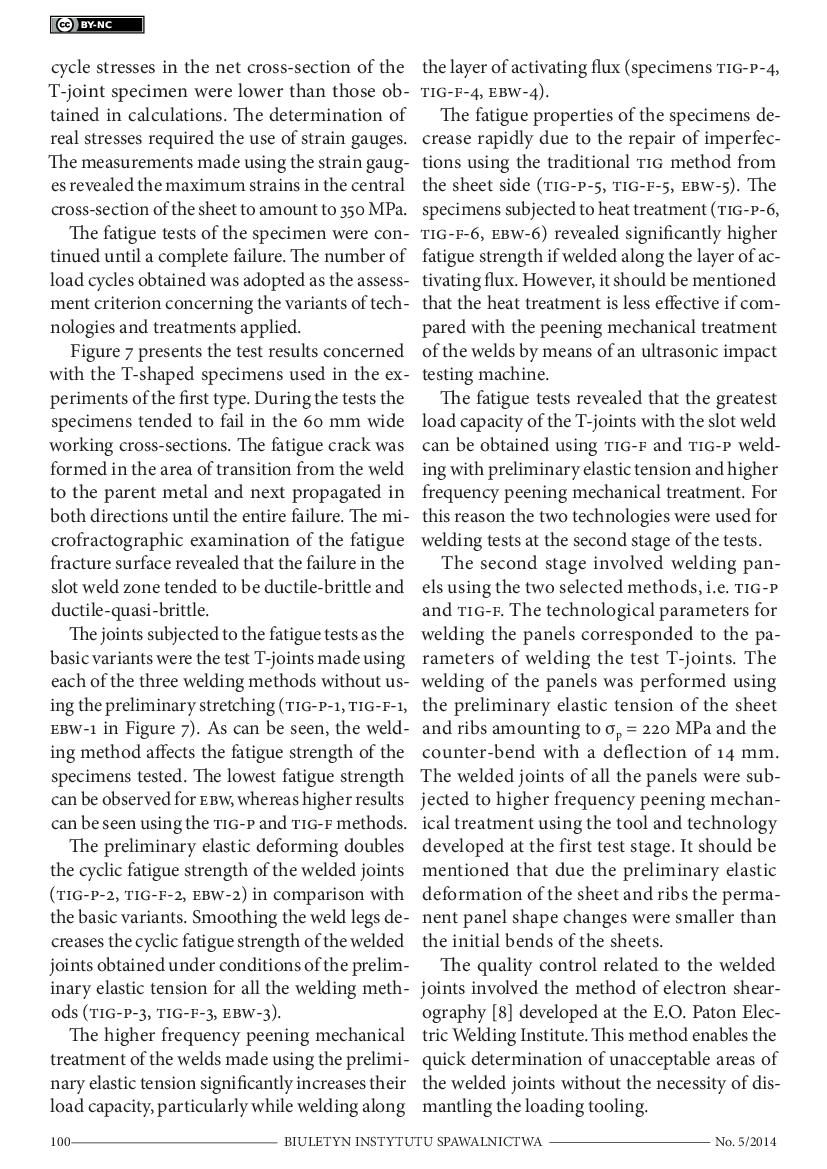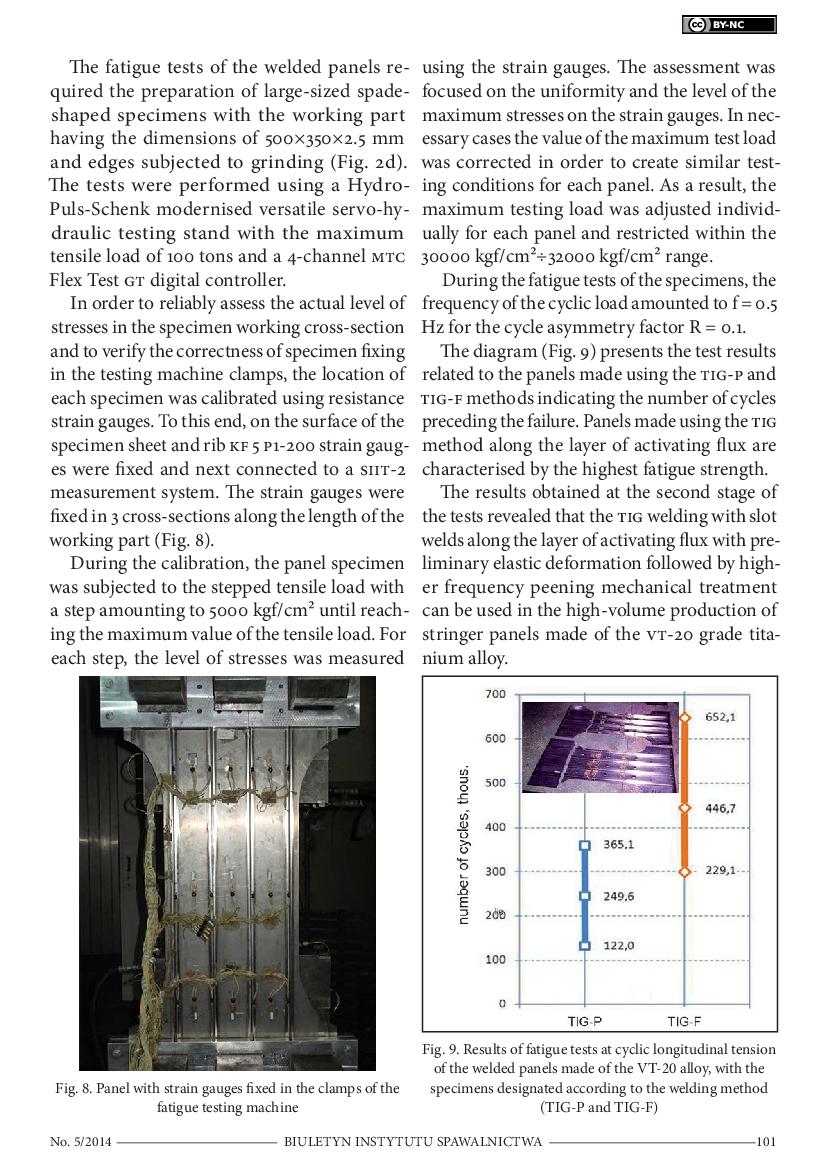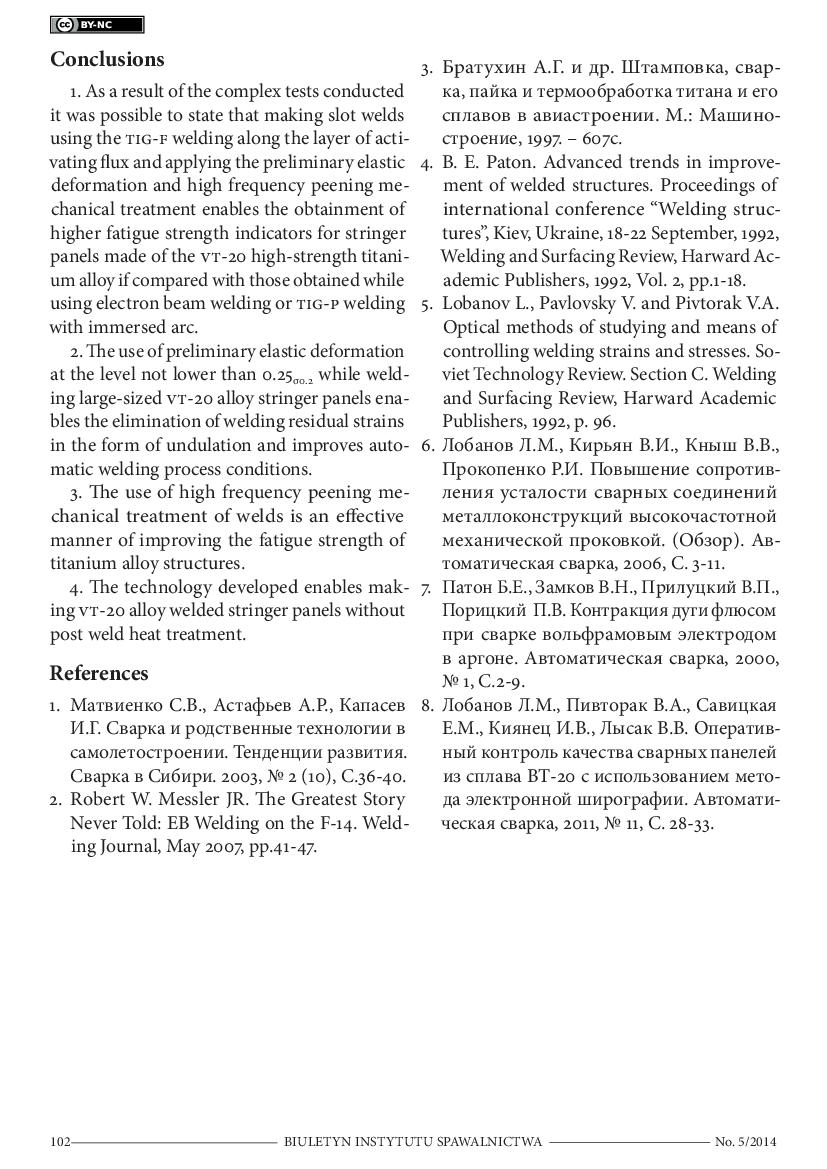Strain-free Welding of VT-20 (BT-20) Stringer Panels
The paper presents results of a complex of investigations on the development of technology of welding of stringer panels of titanium alloy using a slot weld, providing minimum residual stresses and strains and high values of their service life at cyclic loads. Welding of T-joints was performed by slot welds on full-scale specimens using three method of welding: electron beam, automatic non-consumable electrode argon arc welding along the layer of' activating flux and automatic non-consumable electrode argon arc welding with immersed arc. To eliminate the residual welding stresses and strains the preliminary elastic deforming of elements being welded was applied. Testing of all the types of specimens for their fatigue at longitudinal cyclic tension was carried out. The effect of heat-treatment, peening mechanical treatment and repair-welding technologies on their fatigue life was also determined. On the basis of results of investigations of full-scale specimens the batches of stringer panels of 1200 mm length were manufactured and tested. It was found that making of slot welds by argon arc non-consumable electrode welding along the activating flux using preliminary elastic deforming and high-frequency mechanical peening provides the higher characteristics of fatigue life of welded stringer panels of high-strength titanium alloy VT-20 as compared with electron beam welding and argon arc non-consumable electrode welding with immersed arc. The developed technology can serve the basis for industrial manufacture of welded stringer panels of high-strength titanium alloys.
 1 / 9
1 / 9
 2 & 3 / 9
2 & 3 / 9
 4 & 5 / 9
4 & 5 / 9
 6 & 7 / 9
6 & 7 / 9
 8 & 9 / 9
8 & 9 / 9


